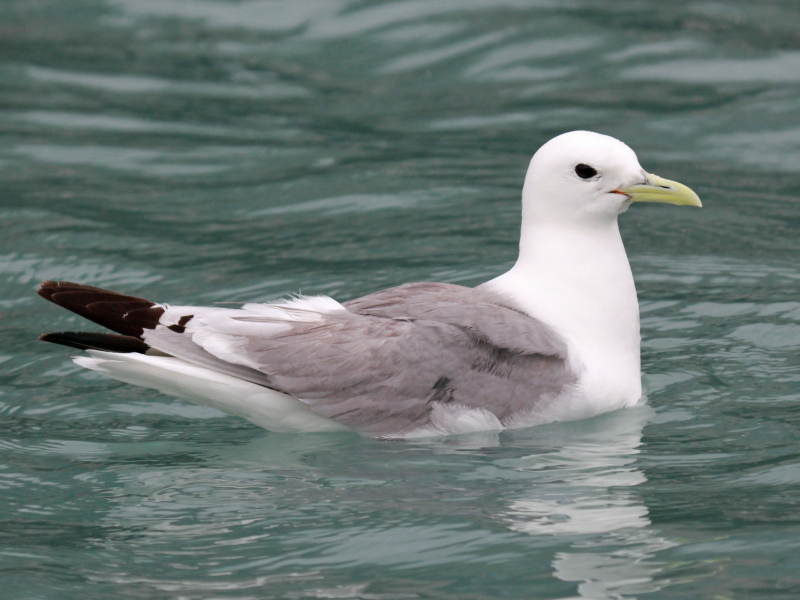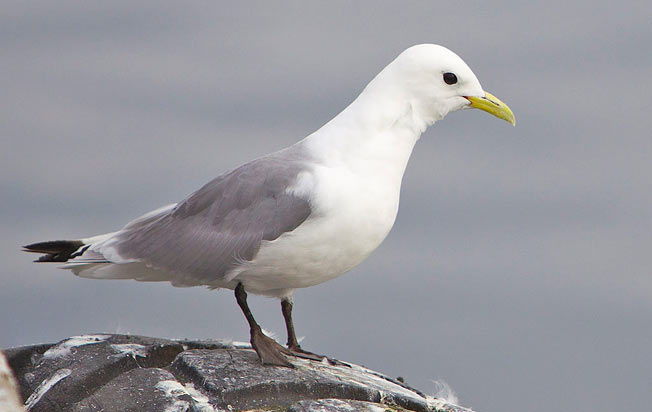Black-Legged Kittiwake
The Black-Legged Kittiwake (Rissa tridactyla) is a seabird species in the gull family Laridae. It is a coastal bird of the arctic to subarctic regions of the world. Their main food source consists of fish, though it is not unlikely to find invertebrates such as copepods, polychaetes, and squids in their diet, especially when fish is harder to find.
The adult measures 37–41 cm long, with a wingspan of 91–105 cm, and weighs 305–525 g. It features a white head and body, a grey back, black legs, a yellow bill, and grey wings with solid black tips. A few individuals occasionally have pinky-gray to reddish legs, which could be mistaken for red-legged kittiwakes. Due to its deep red color, the interior of their mouths is another distinctive trait of the species. Carotenoid pigments and vitamin A, which must be obtained through diet, are the causes of this red coloring. They only have three toes, as suggested by their Latin name, as the hind toe is either completely removed or severely shortened. In winter, this species acquires a dark grey smudge behind the eye and a grey hind-neck collar. The bill also turns a dusky-olive color.












